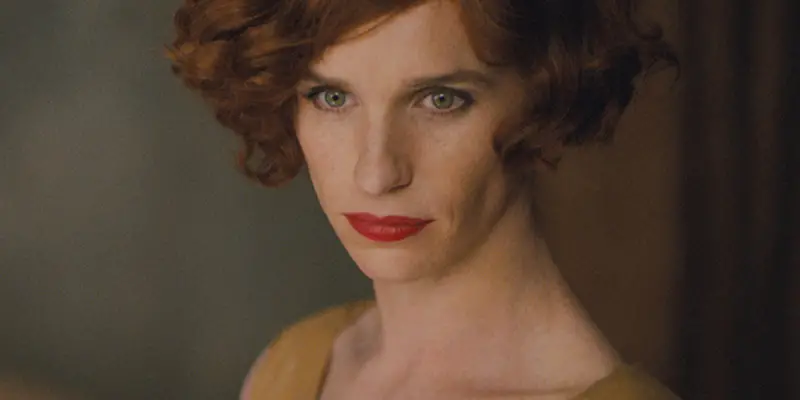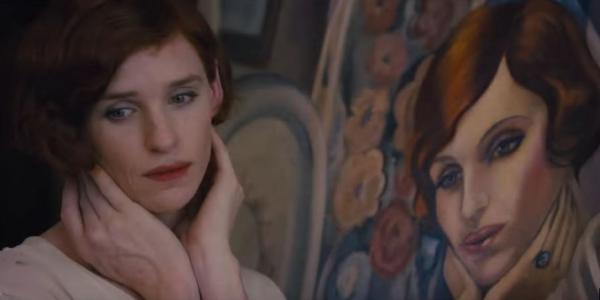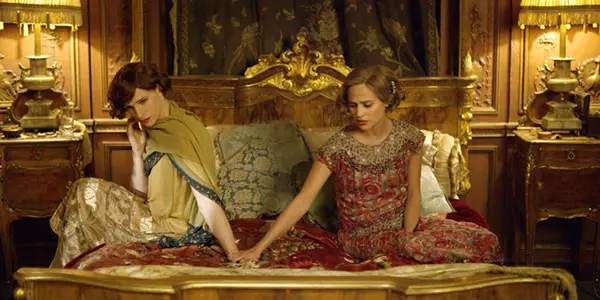THE DANISH GIRL: An Unforgivably Inaccurate Portrayal of Transgenderism

David is a film aficionado from Colchester, Connecticut. He enjoys…
In June of 2015, the Supreme Court declared same-sex marriage legal in the United States. A prominent subject in the news, almost daily it seems that another celebrity or sports player has come out as gay, bisexual, or transgender; Caitlyn Jenner’s recent transformation being a prime example. Although there are still those that are resistant to it, having an alternate sexual orientation or gender identity is now acceptable in the modern world. Following this, it was really only a matter of time before Hollywood decided to cash in on this “trend.”
The Danish Girl, Tom Hooper‘s latest, is about a transgender woman in the 1920s, who was also one of the first people to attempt gender reassignment surgery. Although marketed as a supposedly progressive film about an important topic, it is, at times, almost unforgivably inaccurate. In addition to this, it is easily one of the most excruciatingly dull films I have seen all year.
Femininity at its Most Stereotypical
Taking place in the 1920s in Copenhagen, Denmark, The Danish Girl is about a married couple named Einar (Eddie Redmayne) and Gerda Wegener (Alicia Vikander). The two make a living through painting; while Einar is already a successful landscape artist, Gerda has not yet broken through with her portraits. One day, Einar is asked to stand in for a female model that Gerda was painting. He immediately starts to relish in the feel of the lace stockings, which leads to him dressing as a woman on future occasions. From this, he eventually creates “Lili,” an almost separate female identity.

What initially bothered me with The Danish Girl was the dissociation of self that is present through Einar’s transformation. It’s not that I don’t understand the inner struggle in a transgender person between the gender they are born into versus the one where they feel they truly belong. The way it’s used in the film, though, is almost as a way for the filmmakers to distance themselves from the real heart of the subject. Once Einar starts to feel an awakening inside of him, his attention is not aimed towards the women around him, it is solely towards things: lipstick, eyeshadow, elegant dresses, lacy nightgowns. These are important symbols of femininity, to be sure, but is that all there is?
Once Einar starts to dress as Lili more and more, he thinks of her as not only a separate identity, but as his true self. Here, though, where we could have gotten an introspective look at her conflicted mind, instead we have yet more scenes of Eddie Redmayne admiring pretty things and applying makeup (there is also a particularly awkward naked scene of Lili looking in a mirror). There is a single instance of her standing in a crowded party and feeling awkward as men stare at her, but nothing else to truly show what it means to be a woman.
According to Tom Hooper and screenplay writer Lucinda Coxon, being a woman is nothing more than wearing bright dresses and gossiping with the girls. “What are you going to do with your life now?” Lili is asked at one point. “Be a woman” is the response.
Becoming Lili
Eddie Redmayne is an actor that seems to get a lot of criticism for the roles that he selects. To go from playing Stephen Hawking in last year’s The Theory of Everything to playing a transgender woman in The Danish Girl does seem like an obvious awards grab, yet I still tried to give him the benefit of the doubt. Unfortunately, Redmayne fails to impress with his role as Lile Elbe, and were it not for the transformative look that he needed for the role, he probably wouldn’t even be getting the amount of credit that he has received so far.
The issues with Redmayne’s performance falls in a similar category as those with the film itself: he doesn’t really know how to portray a believable woman, other than the stereotypical aspects that we are lead to believe they all possess. Without any depth to his performance, Redmayne instead overacts: when upset, he suddenly becomes extremely inconsolable, as if, as a women, he is now prone to the emotional outbursts that they all supposedly have.

There is at least one cloud in the silver lining: that of Alicia Vikander, who plays Lili’s wife Gerda. She is the most loyal presence in Lili’s life, who not only sticks by Lili through her transformation but is also strong-minded, pursuing a successful career in painting despite struggles. She is ironically the best representation of the ideals that we wish we had seen in Lili from the start of the film. Vikander, as an equally strong actress, plays the character well, despite some questionable scenes that it must have been difficult not to laugh through (the final shot of the film is just unbelievably clichéd). There is also a romance staged between her and a man named Hans Axgil (Matthias Schoenaerts) that seems completely out of place in the scope of the film.
The Production
Tom Hooper‘s films are known for their grand productions, in particular his last film Les Misérables and 2010’s Best Picture winner The King’s Speech. Due to the fact that The Danish Girl focuses a great deal on fashion and design, the costumes are obviously elegant creations. The sets themselves, though almost primarily indoors, are also quite beautiful, with the camera often framing Lili and Gerda intimately, showing how the two stick together through everything that happens.
Alexandre Desplat‘s light piano-driven score during these scenes is also very moving. Such a lavish production, though, just seems wasted with such a hollow story behind it.
Conclusion
The Danish Girl, although with an admirable production behind it, does not do much to help the transgender community. In actuality, it may harm them further; by portraying Lile Elbe as an emotionally inconsolable, material-driven woman, she becomes nothing more than a stereotype.
And Eddie Redmayne, with his barely-there performance, further distances the film from the reality that it is trying to convey. The only light is that of Alicia Vikander, who with this film and many more from this year, has proven herself to be a true star. It’s just not enough to brighten the rest of Tom Hooper’s hopelessly dull attempt at a transgender film.
What did you think of The Danish Girl? What are some of the most accurate representations of transgenders on screen?
The Danish Girl is open in both the U.S. and the UK. For international release dates, check here.
Does content like this matter to you?
Become a Member and support film journalism. Unlock access to all of Film Inquiry`s great articles. Join a community of like-minded readers who are passionate about cinema - get access to our private members Network, give back to independent filmmakers, and more.
David is a film aficionado from Colchester, Connecticut. He enjoys writing, reading, analyzing, and of course, watching movies. His favorite genres are westerns, crime dramas, horror, and sci-fis. He also enjoys binge-watching TV shows on Netflix.













